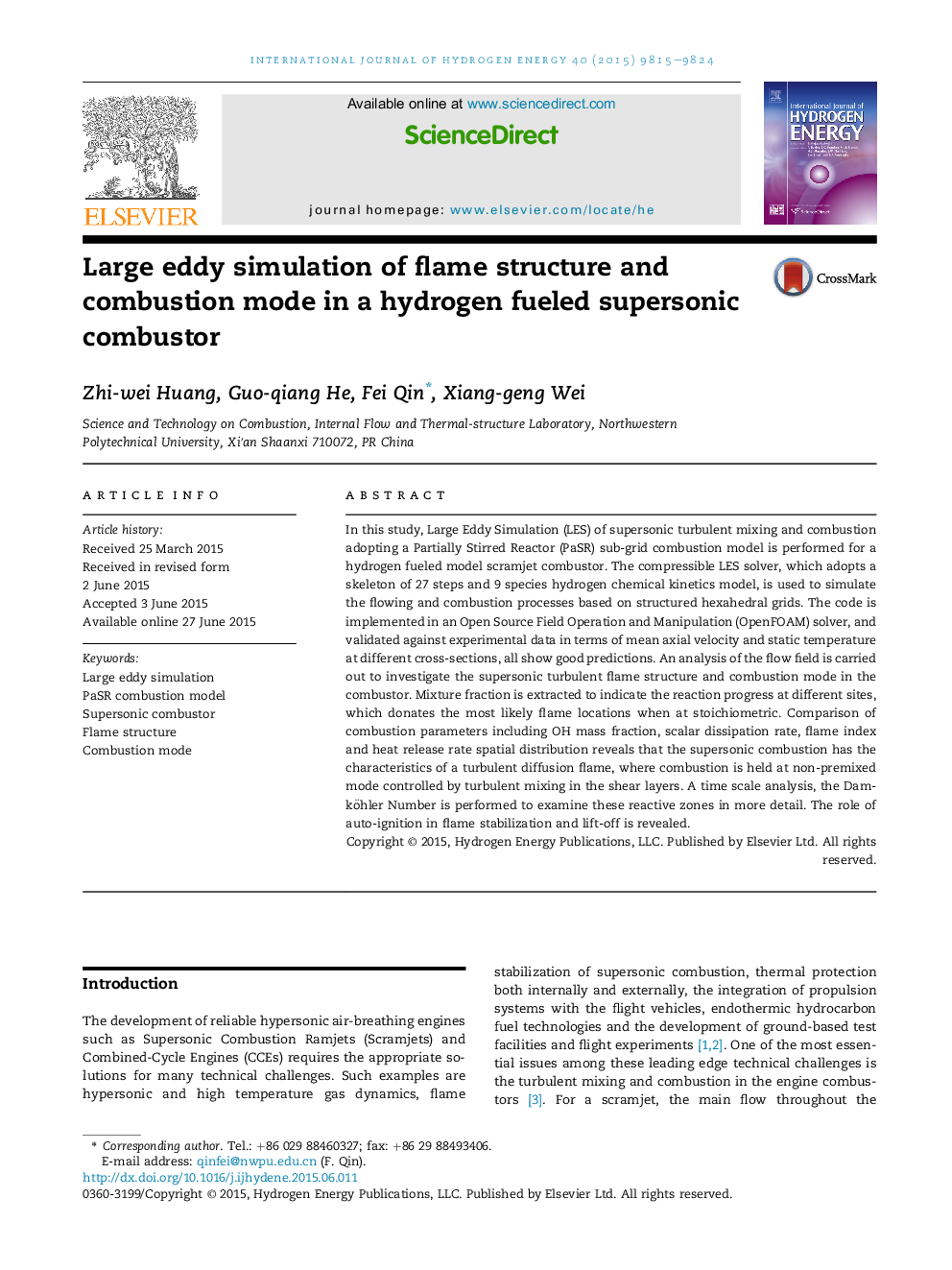| کد مقاله | کد نشریه | سال انتشار | مقاله انگلیسی | نسخه تمام متن |
|---|---|---|---|---|
| 1274874 | 1497442 | 2015 | 10 صفحه PDF | دانلود رایگان |
• A skeleton of 27 steps with 9 species chemical kinetics for hydrogen is applied.
• Stoichiometrical flame locations and different combustion modes are recognized.
• The Damköhler number is extracted to indicate auto-ignition or flame extinction.
• Species concentration and heat release rate is plotted in mixture fraction space.
In this study, Large Eddy Simulation (LES) of supersonic turbulent mixing and combustion adopting a Partially Stirred Reactor (PaSR) sub-grid combustion model is performed for a hydrogen fueled model scramjet combustor. The compressible LES solver, which adopts a skeleton of 27 steps and 9 species hydrogen chemical kinetics model, is used to simulate the flowing and combustion processes based on structured hexahedral grids. The code is implemented in an Open Source Field Operation and Manipulation (OpenFOAM) solver, and validated against experimental data in terms of mean axial velocity and static temperature at different cross-sections, all show good predictions. An analysis of the flow field is carried out to investigate the supersonic turbulent flame structure and combustion mode in the combustor. Mixture fraction is extracted to indicate the reaction progress at different sites, which donates the most likely flame locations when at stoichiometric. Comparison of combustion parameters including OH mass fraction, scalar dissipation rate, flame index and heat release rate spatial distribution reveals that the supersonic combustion has the characteristics of a turbulent diffusion flame, where combustion is held at non-premixed mode controlled by turbulent mixing in the shear layers. A time scale analysis, the Damköhler Number is performed to examine these reactive zones in more detail. The role of auto-ignition in flame stabilization and lift-off is revealed.
Journal: International Journal of Hydrogen Energy - Volume 40, Issue 31, 17 August 2015, Pages 9815–9824
